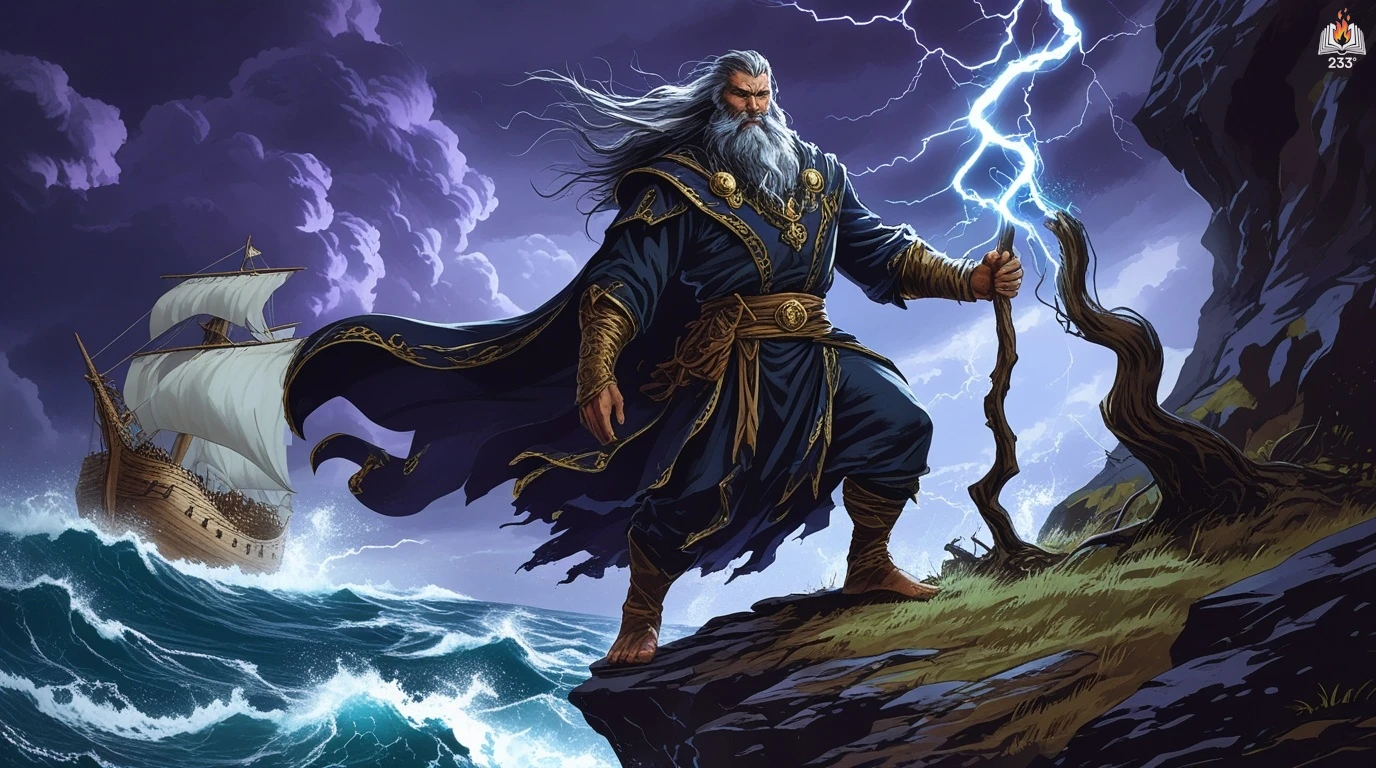The Labours of Hercules by Agatha Christie, first published in 1947, is a short story collection featuring her iconic Belgian detective Hercule Poirot, a central figure in her celebrated mystery series. On the verge of retirement, Poirot decides to solve twelve final cases inspired by the legendary Twelve Labors of the Greek hero Hercules. With wit, precision, and a touch of humor, Christie crafts twelve ingenious mysteries that showcase Poirot’s brilliance and pay homage to classical myth.
Plot Summary
Hercule Poirot sat in his sleek, modern apartment, the world outside bustling with chaos, while within, all was order and calm. Yet retirement loomed, and Poirot, restless, hatched a plan. Twelve cases, each inspired by the ancient Labors of Hercules, would crown his career. And so, the small man with the magnificent moustaches prepared for feats that would challenge even his brilliance.
The first challenge arrived wrapped in the absurd – a missing Pekinese dog. Sir Joseph Hoggin’s wife, distraught over her kidnapped pet, set Poirot on the trail. Beneath the surface of this trivial crime lay a clever scheme led by Amy Carnaby, a humble companion, who orchestrated a racket targeting the rich and their beloved pets. Poirot’s delicate handling, tinged with sympathy, spared her punishment but ended the game. The Nemean Lion, once roaring with threat, was tamed.
Next came the Lernean Hydra, as Poirot confronted the insidious spread of rumor. Dr. Oldfield, a gentle country doctor, faced whispers that he had poisoned his wife. No matter his innocence, suspicion festered like a hydra’s heads. With patient inquiry, Poirot traced the poison to a woman’s jealousy. His precise intervention severed the source of venom, restoring the doctor’s good name.
The Arcadian Deer led Poirot to Switzerland, where a young woman named Nita left behind only a letter and a trail of heartbreak. Poirot, drawn by the lovesick Major Barnaby, pursued the vanished beauty across icy landscapes, only to uncover that Nita was a thief hiding in the guise of innocence. Yet even here, compassion softened justice, and the deer was set free into the mountains once more.
The Erymanthian Boar drew Poirot to the Alps, where a notorious gangster named Marrascaud hid among the winter guests. Trapped by snow, the hotel teemed with whispers and secrets. Poirot, calm as ever amid the storm, unmasked the killer, his sharp eye cutting through disguises and fear. Marrascaud was captured, and the beast brought low.
Poirot faced the Augean Stables not in filth but in political scandal. In a small town, the reputation of a prominent man lay in ruins from a smear campaign. With gentle cunning, Poirot uncovered the truth, restoring dignity to the innocent and washing away the accumulated muck of lies without a splash.
The Stymphalean Birds fluttered in a Welsh village, where two gossiping sisters spread misery. A young woman’s engagement hung by a thread, caught in their talons. Poirot, wielding tact like a blade, clipped the wings of slander, setting the lovers free and silencing the malicious voices.
The Cretan Bull charged through the life of Hugh Chandler, a young man convinced he suffered from hereditary madness. Poirot, more psychologist than detective, peeled away layers of guilt and deception. With compassion, he revealed the truth – not madness, but deliberate poisoning by a jealous family friend. Freed from his imagined curse, Hugh faced his future with hope.
The Horses of Diomedes led Poirot into the world of reckless youth, where a fashionable set indulged in drugs and wild parties. A desperate friend pleaded for help, and Poirot infiltrated the glittering chaos. With precision and calm, he uncovered the supplier, steering the young heirs away from ruin and breaking the chain of destruction without a trace of scandal.
The Girdle of Hyppolita tested Poirot’s subtlety as he pursued the disappearance of a young girl, Nicole, from a train. Behind her vanishing lay an art theft, cleverly masked by the runaway tale. Poirot, deft as ever, restored the girl to her family and recovered the stolen painting, his elegant maneuvers leaving all marveling at his quiet triumph.
The Flock of Geryon drew Poirot into a spiritualist cult, where a wealthy woman faced exploitation by a charismatic leader. With wary steps, Poirot exposed the fraud, protecting the vulnerable and scattering the flock that had gathered around greed and deception. The leader, stripped of his charm, was revealed as a petty criminal playing god.
The Apples of the Hesperides called Poirot to locate a stolen jeweled goblet, a relic of great beauty. Following its journey through shadowy hands and dark corners of the world, Poirot not only retrieved the treasure but also arranged a tender moment of redemption between a dying man and his lost love. The golden apples were restored, their bitter theft sweetened by forgiveness.
At last came the Capture of Cerberus, not in the underworld, but in the heart of London. Countess Vera Rossakoff, Poirot’s old flame, reappeared amid the glitter and danger of a nightclub. Behind her charms lurked a ring of criminal enterprise. Poirot, his heart stirred but his mind clear, dismantled the network, sparing Vera with a bittersweet nod to their shared past. Cerberus, the triple-headed hound, was leashed at last.
As the final labor ended, Poirot sat once more in his square, orderly apartment. The world remained messy beyond his windows, but within, there was peace. The cases were closed, the burdens lifted, and in his hands, he held not a club or sword, but the quiet satisfaction of order restored. His labors, both ancient and modern, had left the world just a little tidier, and Poirot, ever immaculate, was ready at last to rest.
Main Characters
Hercule Poirot: The meticulous, sharp-witted detective with an unparalleled gift for observation and deduction. Poirot’s motivation in this collection is not just the thrill of solving crimes but the artistic satisfaction of matching his intellect against symbolic modern “labors.” Throughout the stories, his signature blend of logic, charm, and vanity drives the narrative and often unsettles those around him.
Miss Lemon: Poirot’s supremely efficient and no-nonsense secretary. Miss Lemon is portrayed as a woman without imagination but with exceptional organizational skills, helping Poirot manage the practicalities of his cases. Her presence provides stability and a touch of dry humor to Poirot’s world.
George (Poirot’s valet): Poirot’s loyal valet and assistant, George is a man of impeccable manners and a deep understanding of British society. Though discreet, his quiet competence and occasional insights make him an essential part of Poirot’s operations.
Recurring Clients and Suspects: Each of the twelve cases features a unique cast – aristocrats, criminals, companions, doctors, and ordinary citizens – whose interactions with Poirot reveal human follies, ambitions, and weaknesses. While they vary in personality, each adds texture and challenge to Poirot’s final labors.
Theme
Order vs. Chaos: Poirot’s life mission is to impose order on a chaotic world. The stories reflect this theme as he untangles messy human affairs, revealing patterns and truths behind crimes that seem senseless at first glance.
Justice and Morality: Christie explores not only legal justice but also personal morality. Poirot often faces moral dilemmas, choosing between upholding the law and offering private justice to those who have already suffered or learned their lesson.
Identity and Transformation: Many characters in the stories conceal their true selves, whether through deception, disguise, or reinvention. Poirot’s cases often hinge on revealing these hidden identities, echoing the transformative trials of the mythic Hercules.
Human Vanity and Weakness: The stories highlight greed, jealousy, pride, and ambition, showing that even the powerful and wealthy are subject to downfall. Poirot’s understanding of these weaknesses is central to his success as a detective.
Writing Style and Tone
Agatha Christie’s writing style in The Labours of Hercules is polished, precise, and effortlessly engaging. She balances intricate plotting with sharp, economical prose, crafting mysteries that unfold smoothly without unnecessary embellishment. Christie’s dialogue is crisp, often tinged with irony, and reveals character through subtle cues rather than heavy exposition. Her keen eye for social nuance allows her to evoke atmosphere, whether in a country manor, a city hotel, or a quiet English village.
The tone of the collection oscillates between lighthearted amusement and moral seriousness. There is a playful undercurrent as Christie parallels the ancient labors with modern crimes, allowing Poirot – and the reader – to delight in the cleverness of each case. Yet beneath this playfulness, Christie touches on themes of human frailty, loneliness, and the cost of ambition, lending emotional depth to what might otherwise be purely intellectual puzzles.
We hope this summary has sparked your interest and would appreciate you following Celsius 233 on social media:
There’s a treasure trove of other fascinating book summaries waiting for you. Check out our collection of stories that inspire, thrill, and provoke thought, just like this one by checking out the Book Shelf or the Library
Remember, while our summaries capture the essence, they can never replace the full experience of reading the book. If this summary intrigued you, consider diving into the complete story – buy the book and immerse yourself in the author’s original work.
If you want to request a book summary, click here.
When Saurabh is not working/watching football/reading books/traveling, you can reach him via Twitter/X, LinkedIn, or Threads
Restart reading!








